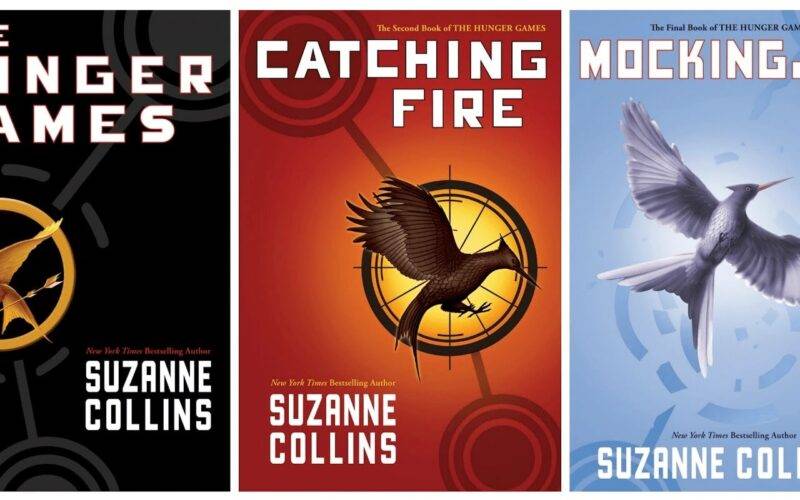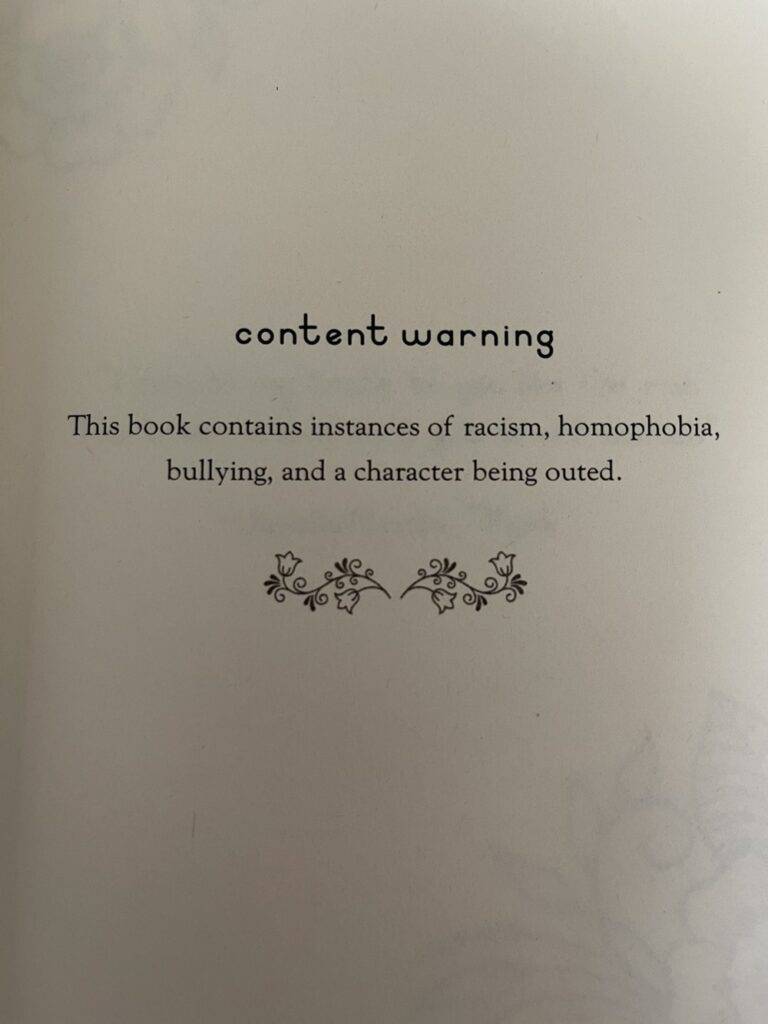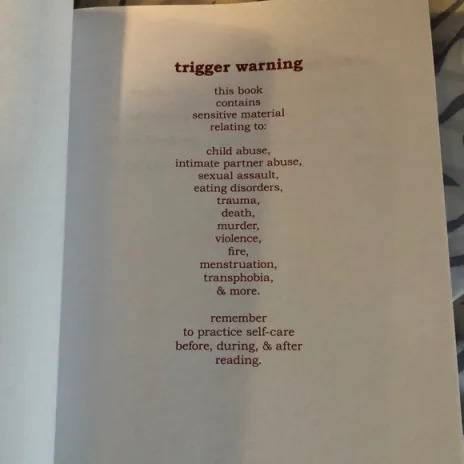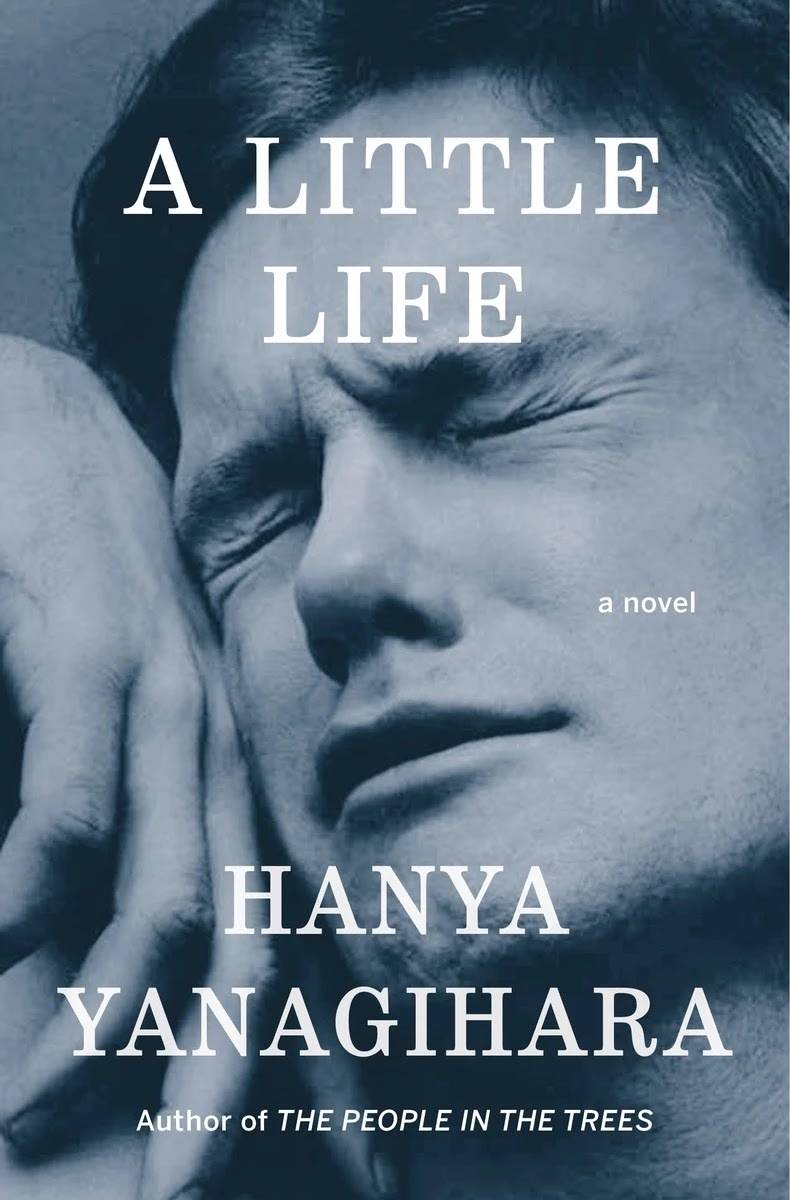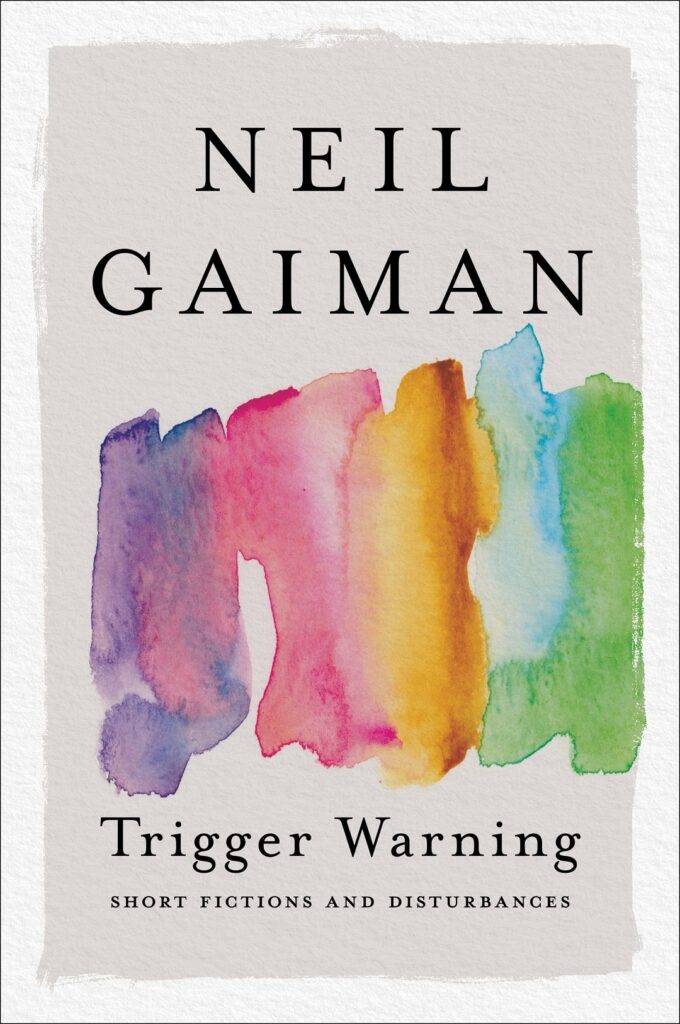The blurb of the book is not enough to tell readers what exactly the story will bring to you. There could be some themes that you may not like or the way the characters may talk to each other. More than just disliking it, it can stir up some ugly emotions and cause you to spiral. What was supposed to be a relaxing read can become a book of nightmares! This is exactly why books these days come with trigger warnings (TW).
What Is A Trigger Warning in Literature?
To talk about trigger warnings, one must focus on triggers first. It is a stimulus that coaxes people into reliving a painful memory or worsening their mental illness. This stimulus can refer to anything, from a graphic depiction of violence to a random song or odour. When people with post-traumatic stress disorder or other anxiety disorders come across their triggers, they get distressed, overwhelmed, and lose themselves in their painful memories.
When applied to literature, trigger warnings become a list of things that may or may not affect the readers’ mental health. This list is present there to let the readers know what kind of triggers exist in the plot. If there is something that you think may trigger you, you can avoid the book altogether.
One can’t make an exhaustive list of trigger warnings, as the trigger for one person won’t affect another at all. But common warnings include abortion, toxic relationships, drugs, slut shaming, pedophilia, death, eating disorders, needles, child abuse and car accident.
Readers these days are more inclined to read heavier genres like dark romances, fantasy fiction, and thrillers. This change has made trigger warnings all the more important!
Where Did They Come From?
Naturally, the term trigger warnings was more common in psychological literature, to warn readers about the potential triggers. However, the concept spread into the mainstream when feminist message boards started using the term as early as the late 1990s. It came in handy to warn the members with PTSD, as these boards frequently discussed topics like child abuse, suicide, and sexual assault.
The term soon trickled into other spheres of the Internet, especially social media. This development led the students to ask their professors to include the warnings in their classes. Around 2014, Oberlin College, Ohio, released a trigger warnings policy to guide the faculty members into leading more aware and sensitive lectures. Unfortunately, they had to remove the policy after the faculty rejected it. They thought it was simply impossible to keep track of every student’s triggers and thus, difficult to implement in the classroom.
But such a step made trigger warnings more acceptable to other academics, ultimately trickling into literature. Nowadays, there are even special websites and platforms dedicated to telling readers about any book’s trigger warnings. You can refer to these websites to get an overview of the novels you want to read and decide accordingly.
Trigger Warnings VS Content Warnings
While content warnings and trigger warnings have somewhat similar definitions, using these terms interchangeably is not wise. Trigger warnings, as described above, are a set of things that may trigger people. These are, therefore, highly specific and can pertain to one scene of the book or even a few dialogues.
On the other hand, content warnings are not specific about the events of the book. Instead, it offers or warns the readers about the content of the novel. It offers a broader perspective on the book without giving out any specific spoilers.
To understand this better, you can take the example of Suzanne Collins’ The Hunger Games. The content warning of this series will include death, oppression and graphic depiction of violence. These terms offer a peek into what the story is about without revealing any nuances of the plot. However, if you read its trigger warnings – animal death, gore, parental abuse, and alcoholism, among others – you get a much clearer picture. This list is comprehensive, and, as some readers may find, may spoil the story for them.
The debate of which one of these is better to include in books is an ongoing one. But most readers agree that offering both content and trigger warnings is the best choice!
Why Are Trigger Warnings Important?
Trigger warnings came into literature because they had a purpose to serve. This purpose is multifaceted but can be boiled down to three broad reasons why it’s important!
o Being mindful of mental health: Not everyone reading the novels can handle heavy topics, especially people with PTSD, anxiety and depression. So, when they read the trigger warnings of any books, it informs them about the content they’ll be perusing. These readers can then make an informed decision based on their tolerance and stress levels.
o Facilitating reader’s autonomy: Reader’s autonomy is where the readers can make decisions about their reading process without anyone influencing them. When a book comes with trigger warnings, authors and publishers are essentially offering readers the right to choose. There is no influence on readers; instead, trigger warnings empower them to make the right choice for their mental well-being.
o Providing readers with a safe space: Trigger warnings let people bond over books with heavy content by letting them share their opinions and stories. For example, Hanya Yanagihara’s A Little Life might be a social media sensation, but the comments are filled with people who have come together to vent and discuss. They have posted about triggering points of the plot as a way to warn other readers as well as critical opinions and sweet encouragements.
Why Do Some Readers Think Trigger Warnings Don’t Work?
Trigger warnings have been under a lot of speculation, mostly because no one knows if they work or not. As a result, researchers have conducted studies to prove their benefits. Unfortunately, most studies show that trigger warnings didn’t lessen any negative feelings. In fact, some researchers hold the notion that they may have the opposite effect.
These studies showed that individuals who were given the warnings were more stressed. On top of that, their presence also made their painful memories more vivid, resulting in prolonged distress.
On top of this, there are also certain issues when it comes to trigger warnings in books. Firstly, giving a list of such warnings may be equivalent to giving spoilers to readers. For many people, it ruins the surprise of what the book contains, discouraging them from reading it. Unless that book is Neil Gaiman’s Trigger Warning! Well, that one is a unique fiction collection with trigger warnings as its theme!
Secondly, books don’t list every potential trigger; instead, authors or publishers provide broad categories of triggers. As a result, some readers may get triggered after all, thus rendering the list of trigger warnings ineffective.
All these reasons, along with the results of studies, put emphasis on the fact that trigger warnings may not be effective.
Final Words
Trigger warnings are equally loved and hated in the reading community, sparking constant debate about their existence. For some readers, trigger warnings are crucial through their mental health connotations and the way they help people make an informed choice. However, some people are not impressed by their presence, as they can spoil the novel as well as potentially increase readers’ distress.
The perception of their usefulness may change from person to person. However, the stance of trigger warnings being useful has an upper hand, as more and more people seek TW lists while reading. Ultimately, it’s up to you to decide whether you love trigger warnings or not!

